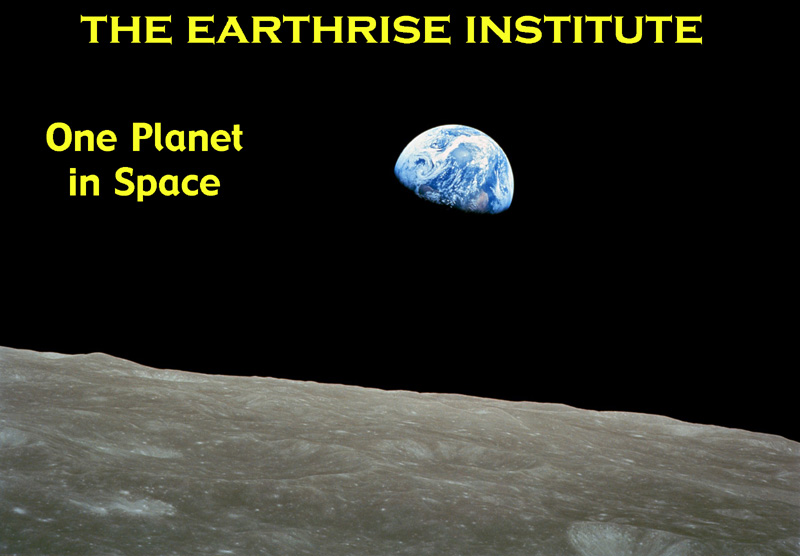
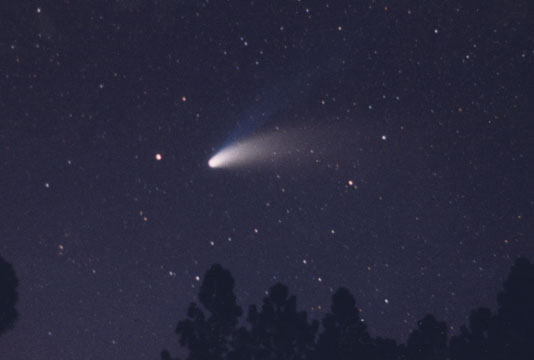
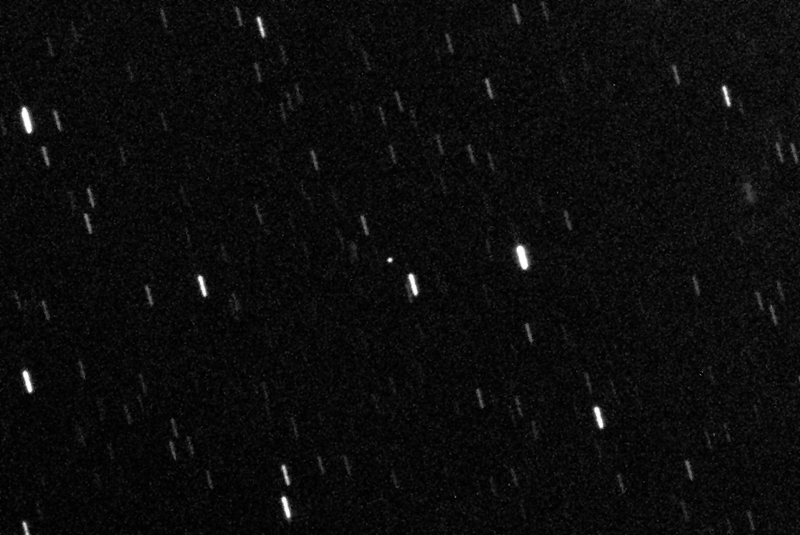
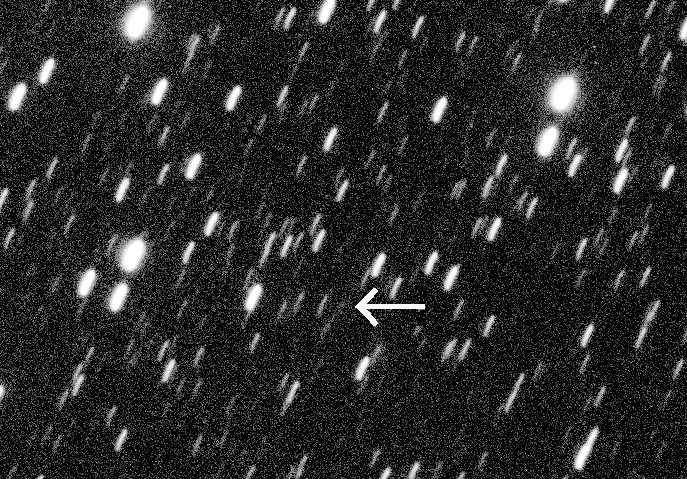 LEFT: The near-Earth asteroid 2019 HC, imaged with the LCO facility at the South African Astronomical Observatory on April 16, 2019, slightly over 11 hours after its discovery by the ATLAS program. 2019 HC is an Amor-type asteroid with an orbital period of 4.4 years and a perihelion distance of 1.20 AU; it passed 0.21 AU from Earth on April 25. RIGHT: One of the faintest comets I have successfully imaged with the LCO telescopes. This is Comet NEOWISE C/2019 H1, imaged with the LCO facility at Teide Observatory in the Canary Islands on April 24, 2019. The comet was discovered on April 18 by the WISE spacecraft; it passed perihelion (1.85 AU) on April 27.
LEFT: The near-Earth asteroid 2019 HC, imaged with the LCO facility at the South African Astronomical Observatory on April 16, 2019, slightly over 11 hours after its discovery by the ATLAS program. 2019 HC is an Amor-type asteroid with an orbital period of 4.4 years and a perihelion distance of 1.20 AU; it passed 0.21 AU from Earth on April 25. RIGHT: One of the faintest comets I have successfully imaged with the LCO telescopes. This is Comet NEOWISE C/2019 H1, imaged with the LCO facility at Teide Observatory in the Canary Islands on April 24, 2019. The comet was discovered on April 18 by the WISE spacecraft; it passed perihelion (1.85 AU) on April 27.
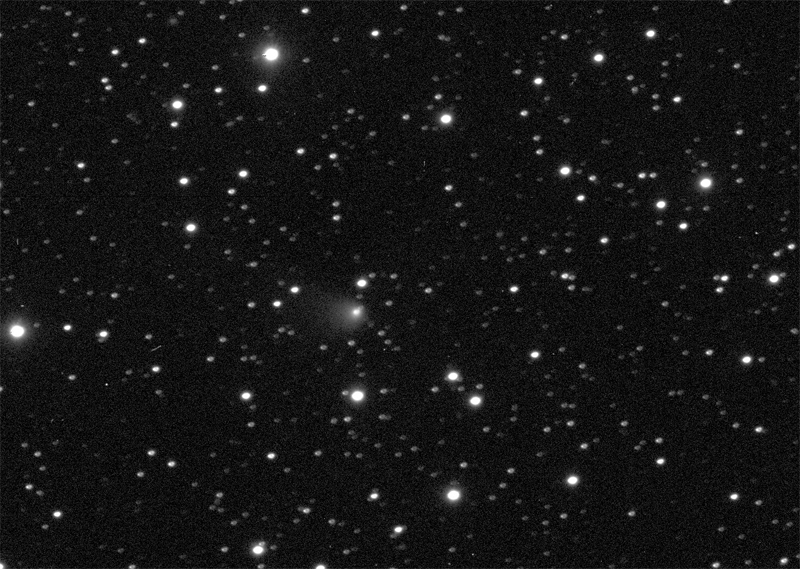
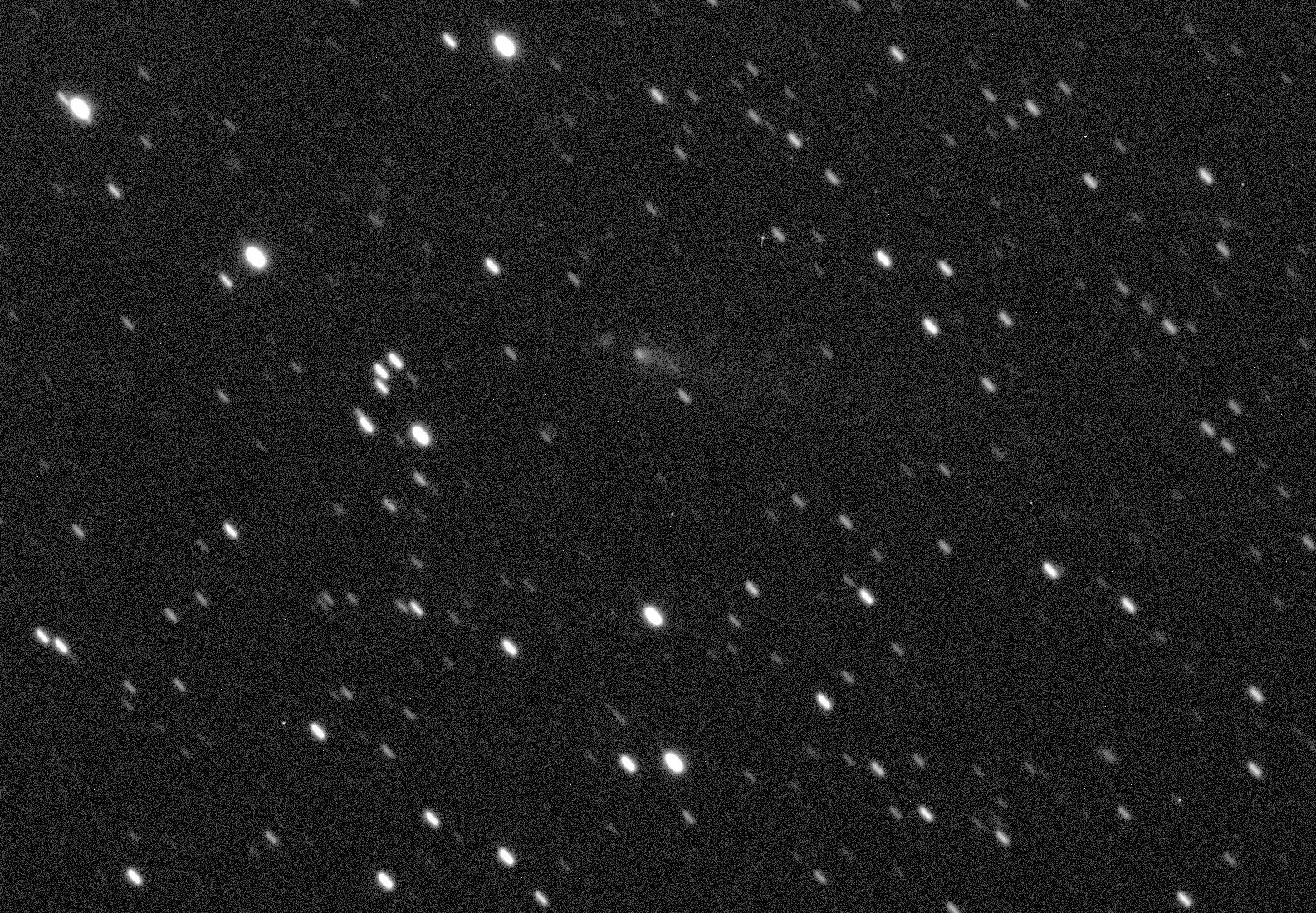 LEFT: Comet Gibbs C/2018 A6, imaged with the LCO facility at the South African Astronomical Observatory on April 26, 2019. It was too faint for me to detect when I was in Australia in early February, but by the latter part of April it had become bright enough for visual observations for observers in the southern hemisphere. RIGHT: Comet Flewelling C/2019 D1 (no. 661) on April 28, 2019 -- a little over 14 hours before I first picked it up visually -- from the LCO facility at Siding Spring Observatory in New South Wales.
LEFT: Comet Gibbs C/2018 A6, imaged with the LCO facility at the South African Astronomical Observatory on April 26, 2019. It was too faint for me to detect when I was in Australia in early February, but by the latter part of April it had become bright enough for visual observations for observers in the southern hemisphere. RIGHT: Comet Flewelling C/2019 D1 (no. 661) on April 28, 2019 -- a little over 14 hours before I first picked it up visually -- from the LCO facility at Siding Spring Observatory in New South Wales.
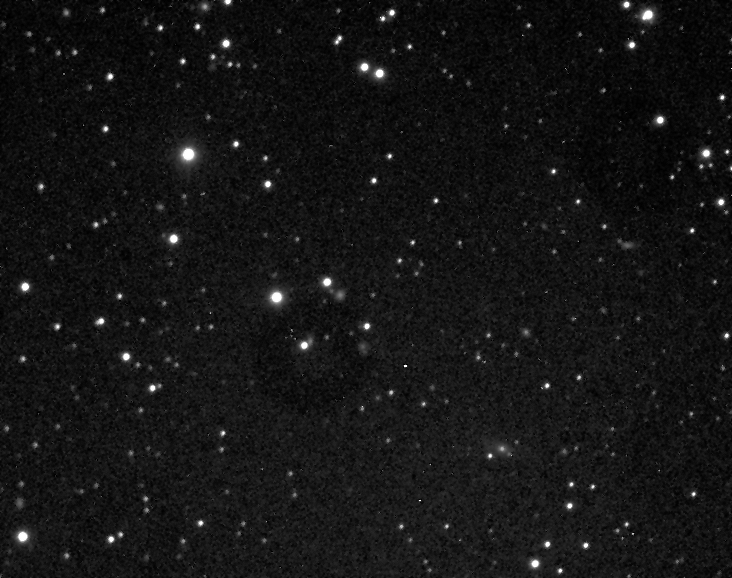
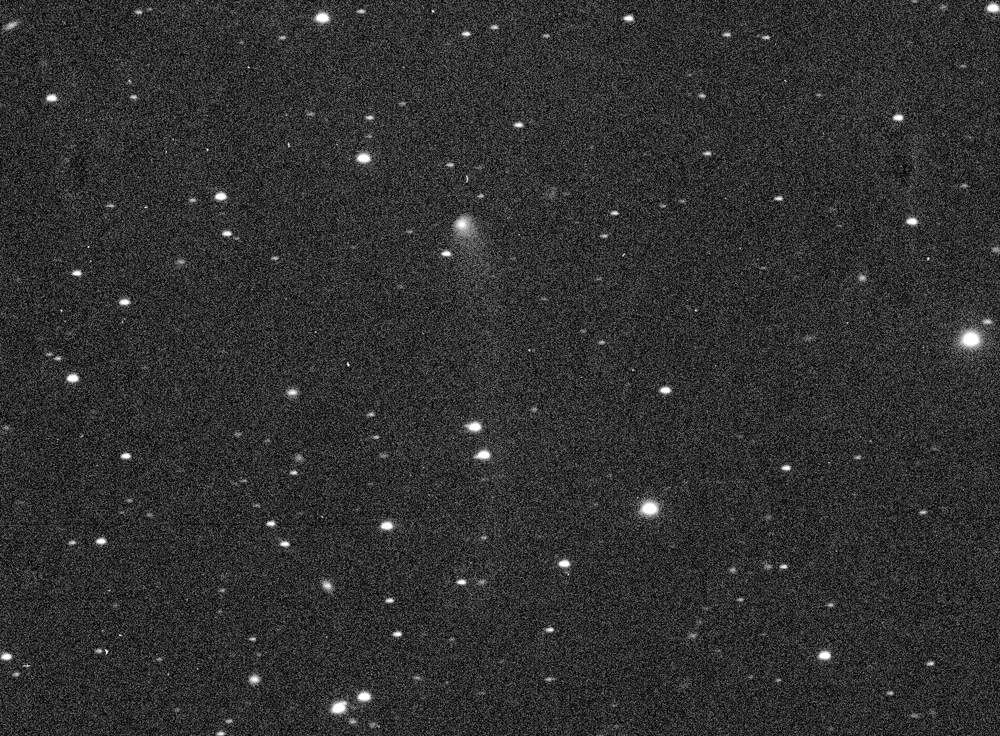 LEFT: The very distant inbound Comet PANSTARRS C/2017 K2 on April 29, 2019, from the LCO facility at Teide Observatory in the Canary Islands. (The comet is the small fuzzy object below center; there is a somewhat bright star close to its upper right.) At the time this image was taken the comet's heliocentric distance was 11.8 AU. RIGHT: Comet LINEAR C/2017 B3 on May 5, 2019, from the LCO facility at Cerro Tololo Inter-American Observatory in Chile. The comet passed perihelion in early February 2019 at a distant 3.9 AU; it has been in southern circumpolar skies since early 2018 but is now slowly moving north, and although at this writing (early May) it is still only accessible from the southern hemisphere, by the latter part of July it should finally become accessible from my latitude, and may be bright enough for visual observations.
LEFT: The very distant inbound Comet PANSTARRS C/2017 K2 on April 29, 2019, from the LCO facility at Teide Observatory in the Canary Islands. (The comet is the small fuzzy object below center; there is a somewhat bright star close to its upper right.) At the time this image was taken the comet's heliocentric distance was 11.8 AU. RIGHT: Comet LINEAR C/2017 B3 on May 5, 2019, from the LCO facility at Cerro Tololo Inter-American Observatory in Chile. The comet passed perihelion in early February 2019 at a distant 3.9 AU; it has been in southern circumpolar skies since early 2018 but is now slowly moving north, and although at this writing (early May) it is still only accessible from the southern hemisphere, by the latter part of July it should finally become accessible from my latitude, and may be bright enough for visual observations.
NEXT PAGE -->
Return to Comet Resource Center